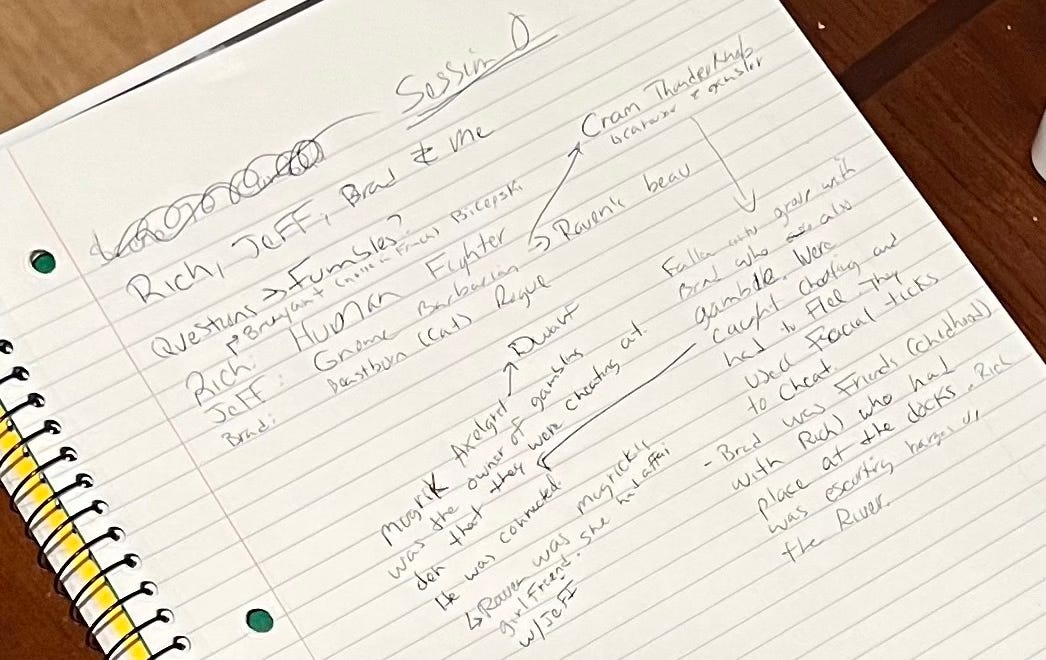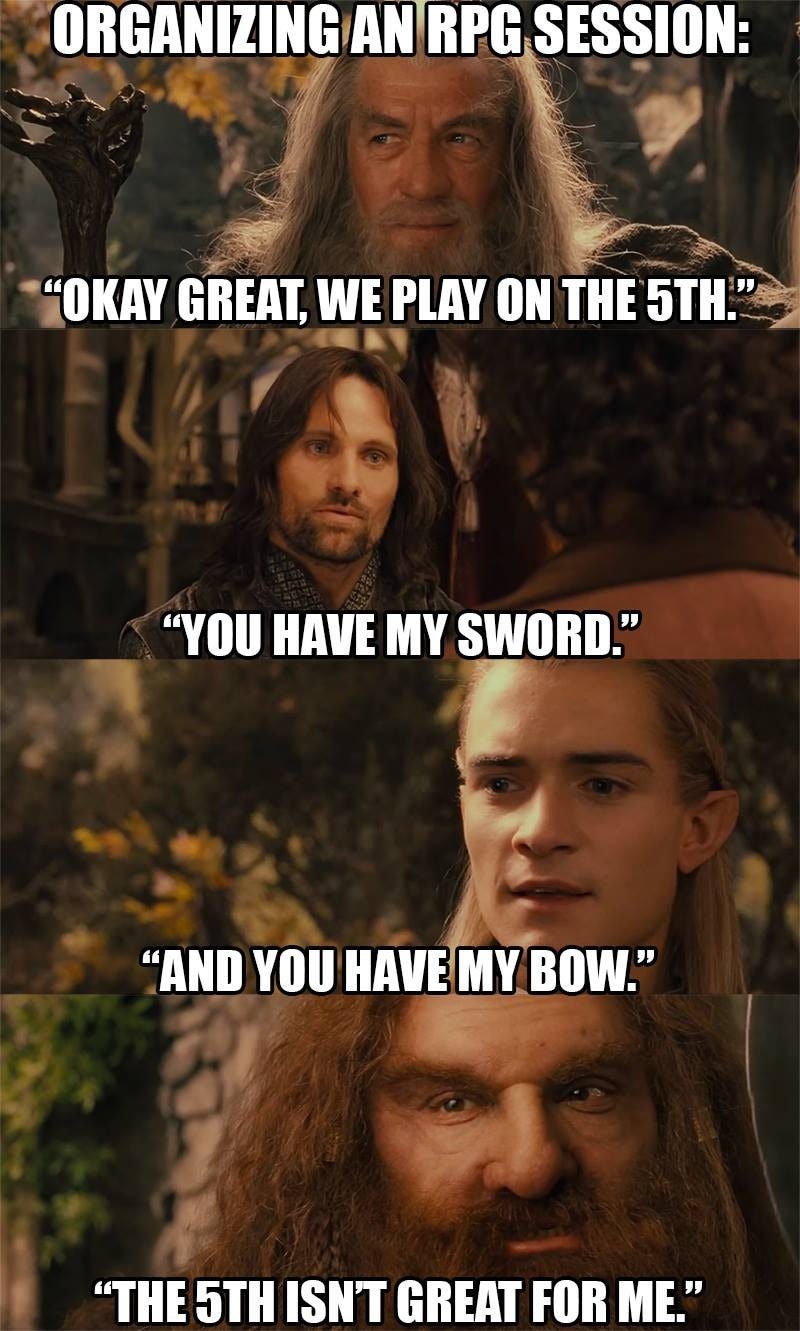A slight change of plan
My group usually consists of five players and one person running the session. For my planned Sunday session, we had four players lined up along with myself, which I felt was ideal for an introductory session & module. However, on the morning of the game, one of the players had to cancel due to illness.
Even with just three players available, we decided to move forward. The plan was for the three who attended to learn the system and help bring the others up to speed after Session 0. We adjusted the session accordingly, focusing on the overview and character creation. We decided to hold off on starting The Hunted until we had at least four players ready to join in.
Character creation
Once everyone arrived, we spent some time chatting before diving into DC20. To kick things off, I shared the reference materials I had gathered for them. I’d prepared a loose agenda for the session, structured around how I thought players would want to learn the system.
We started with the main differences between DC20 and D&D. At the top of my list was the flexibility of the system. I explained how DC20 is designed to make characters as unique as possible, highlighting features like ancestry points, custom weapons, and combat techniques.
Next, I covered some of the core mechanics, emphasizing the importance of rolling high on a d20. Unlike D&D, where a hit is just a hit (excluding natural 20s), in DC20, higher rolls can mean more damage or greater degrees of success.
From there, we discussed the four player attributes and how they factor into character creation, particularly the decoupling of attributes from class selection. In most RPGs, selecting a class—like a Fighter—typically dictates how you assign your attributes (e.g., prioritizing Strength for a Fighter in D&D). DC20, however, allows for more creativity, such as building an Intelligence-based Fighter who is just as powerful as one focused on Might.
Before jumping into character creation, I introduced the group to the different types of Actions, Maneuvers, and Techniques used during gameplay. This part was the hardest to explain because there were so many options to cover, but having handouts available made it easier for the players to follow along.
Finally, we began creating characters, following the outline in the beta rules. Assigning attributes, skills, and other standard values (like health, mana, and defense) was straightforward. Things got more challenging when we moved into species and classes, mainly because there were so many options and a limited amount of material to reference. Since DC20 is still in beta, the rules aren’t widely accessible, so the players couldn’t look things up online or consult a Player’s Handbook-style guide. We had to rely on my hardcopy and share the iPad, but we made it work—and had a lot of fun doing it.
The players especially enjoyed the variety of ancestry traits they could choose from. One player decided to create a Beastborn with a tail that could be used as an action, which added a really fun element. After about two hours, they had their characters ready: a Gnome Barbarian, a Beastborn (cat) Rogue, and a Human Fighter. It was a great start!
Quick action sample
As the evening wound down, I pulled out the combat scenario I had prepared to showcase the DC20 actions I mentioned in my last post and walked the players through it. Unfortunately, it didn’t go as well as I had hoped. It wasn’t bad, but it lacked the level of engagement I was aiming for.
The main issue was that it ended up being more of a lecture than an interactive experience. I talked through two rounds of combat, but the players didn’t have much input, which made it less engaging for them.
Looking back, I’d recommend creating a similar scenario but finding ways to make it more interactive for the players. For instance, scripting a few specific choices for them to make during the scenario could provide some guidance while still giving them opportunities to participate. This way, they could actively explore the system’s mechanics within a controlled framework, rather than just listening to an explanation. It would strike a better balance between teaching and keeping them involved.
The end and the beginning
Overall, I thought the session went really well. The group seemed to enjoy the new system and quickly got into building backstories for their characters, showing off some impressive creativity.
Next up is the challenge of getting everyone together to play—something we all know can be easier said than done!





